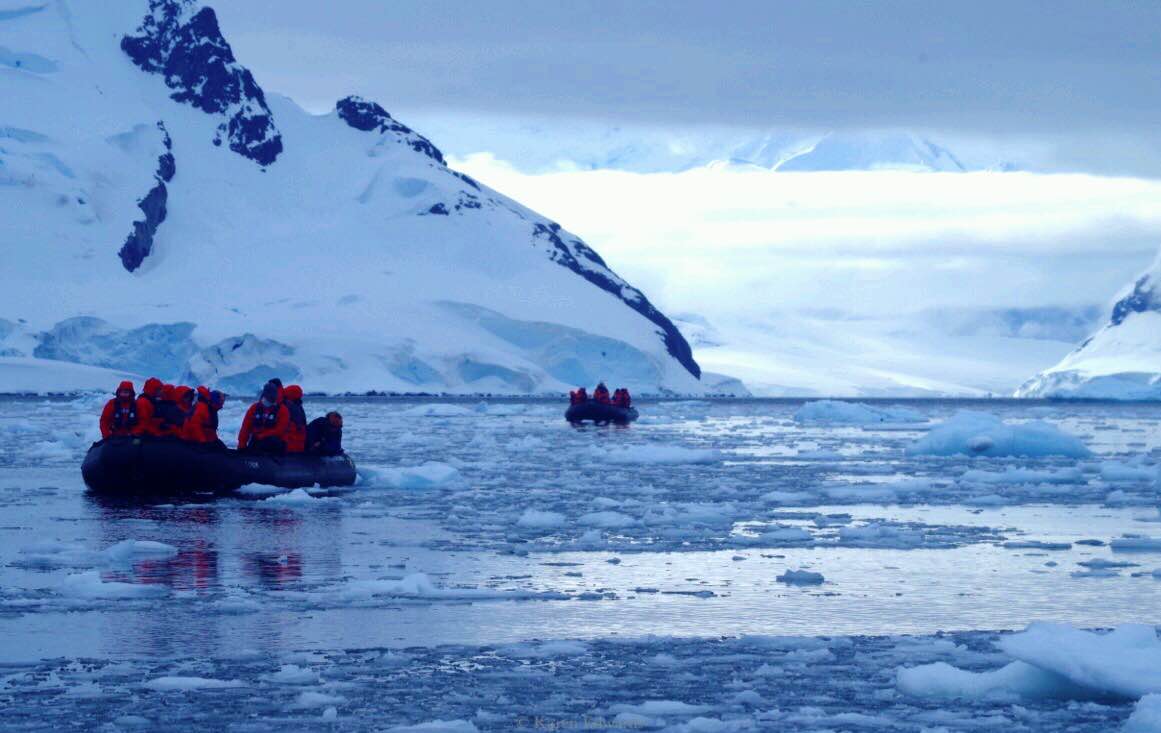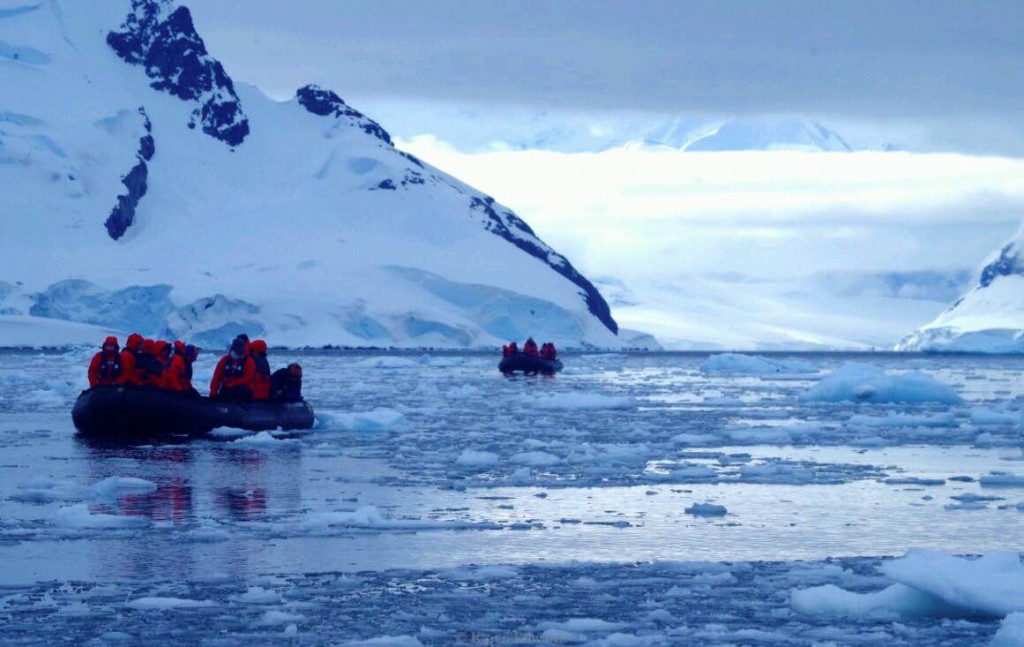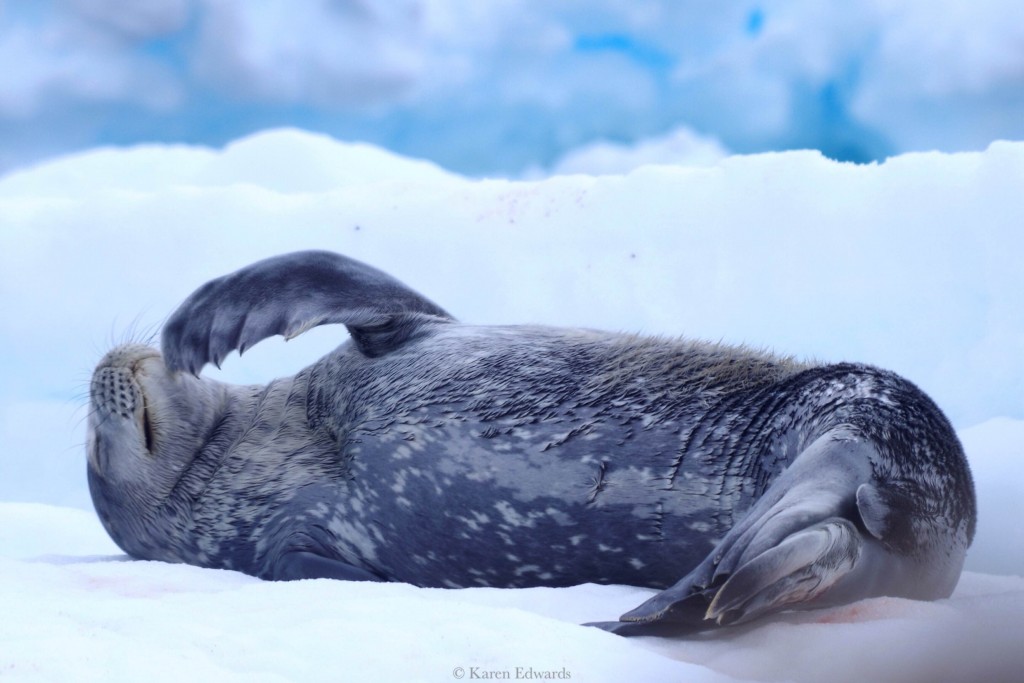Attitude’s Travel Insider: Should tourists be banned from Antarctica?

Just like jeans, music and reality TV stars, holiday destinations come in and out of fashion. In 2013, it was all about Myanmar. The country had recently reopened to visitors after a military war; everyone realised the beaches were all untouched and suddenly we were all booking a plane east. Last year, it was Sri Lanka. Again, the civil war had come to an end and a whole heap of four and five-star resorts began popping. With them came the tourists. I’m pretty sure my entire Facebook timeline has been or has a trip planned there in the next few weeks.
So where is everyone talking about now?
Antarctica. In fact, this season an estimated 37,000 tourists are expected to visit the region. It’s known to be on average the coldest, driest and windiest place on earth. But at the moment, talk isn’t just about how to get there and how many layers to take (you will need a fair few of those, by the way). Instead, the debate is on; should tourists be allowed in Antarctica at all?
It’s a good question. One that can leave even the most travel-obsessed individual divided. And the truth is, there’s probably a fine line here.
Last month, I had the pleasure of visiting a section of the Antarctic Peninsula. I can’t tell you how glad I am that I did. I travelled there on an expedition ice-breaker ship called the Silver Explorer, run by a private tour company called Silversea. There were 111 other guests on board, the crew and 11 Antarctic experts; including ornithologists, a marine biologist, a botanist, Antarctic researchers and a social and political expert. It didn’t feel like a cruise. For a start, there was a lecture theatre on board, and our 48-hour journey from the southernmost point of Argentina – a city called Ushuaia – to the north-eastern most point of the Peninsula – the South Shetland islands – was spent either listening to briefings about Antarctic wildlife, environment and safety or being sea sick (the infamous Drake Passage can be rather rowdy when she wants to be).
But most importantly, from the moment we boarded the ship our responsibility to this remote and pristine environment was explained. There were rules to adhere to, and breaking them would not be tolerated. I looked around as each individual face took in the information they were being given. Everyone understood; this was important, serious. We all had a role to play in keeping Antarctica the way it is.
First things first, our outerwear would be checked by the experts for ‘alien’ species. Our boots, rented from a sister company, would be delivered to us in sealed packaging. Each time we got on and off the ship, we would wash and disinfect them in the ‘mud room’. There would be no eating on land – and if nature called, there would always be a bio-secured Zodiac (a small rubber powerboat) handy to take us back to the ship. Basically yellow snow, is a big no-no.
We’re told to keep at least 15 feet between us and any wildlife – mainly the three species of penguins which we would see on a daily basis (Gentoos, Chinstraps and Adélies) and seals (Weddells and Elephant). Finally, we weren’t to take any thing away other than photographs.
And you know what? None of that was hard to remember, because once you reach this beautiful place with its bright blue ice bergs, powder-white glaciers and glassy waters, all you want is to savour and protect it.
By day, we made two landings. The Silver Explorer never docks, instead it anchors off-shore and we board Zodiacs in small groups to reach land. Once there, we are guided by the lovely expedition team who explain the penguin behaviour, talk to us about seals, point out the two species of lichen growing on the exposed mountain faces and toboggan down the snowy hills with us. Their passion and knowledge for the area is inspiring and we learn ridiculous amounts about the environment. Like how the Gentoo colonies are thriving but the Chinstraps and Adélies are in decline thanks to the slow ice-melt process and the now industrial sized krill-farming which goes on here. We’re fishing the main food supply in the Southern Sea. We’re contributing to the decline in penguin, seal and whale populations by taking straight out of the bottom of the food chain. That’s just a fact.
I came back with a wealth of knowledge I knew I couldn’t have found anywhere else (unless I fancied taking on a three-year Marine Biology degree – I don’t). As we disembarked the ship, there was a buzz in the air. Everyone wanted to shout about what they learnt. Could we get the message out there about krill farming? Does anyone actually even know what krill are? It was worth a shot.
That 10-day trip with the Silversea team made us all Antarctic ambassadors and that – right there – is why tourists should be allowed to visit the region. See, you’re reading this now – and, hopefully, have learnt something too.
Silversea’s Silver Explorer departs on a 10-day roundtrip from Ushuaia on 12 December 2015. Fares start at £6,950 based on double occupancy of the Explorer Suite. Call 0844 251 0837 for information and reservations.
Find out more about Antarctica and the Antarctic Treaty at antarctica.ac.uk
Karen Edwards is a freelance Travel & Entertainment Editor based in London. She can be found tweeting at @KarenNEdwards and contacted through her personal blog popandprettythings.com
Attitude advice: GETA (Gay European Tourism Association) recommends that gay travellers check the legal position of the countries they are planning to visit. Visit the IGLA Rainbow Europe Guide at ILGA-EUROPE.ORG or visit the Foreign Office & Commonwealth website FCO.GOV.UK before you make any travel plans.
More from Attitude’s Travel Insider:
Attitude’s Travel Insider: How to take the perfect holiday snaps on your iPhone
Attitude’s Travel Insider: 5 ways to blag yourself into First Class


![Viewfromthe Silver Explorer[1]](/wp-content/uploads/sites/5/2015/01/Viewfromthe-Silver-Explorer1-1024x678.jpg)
